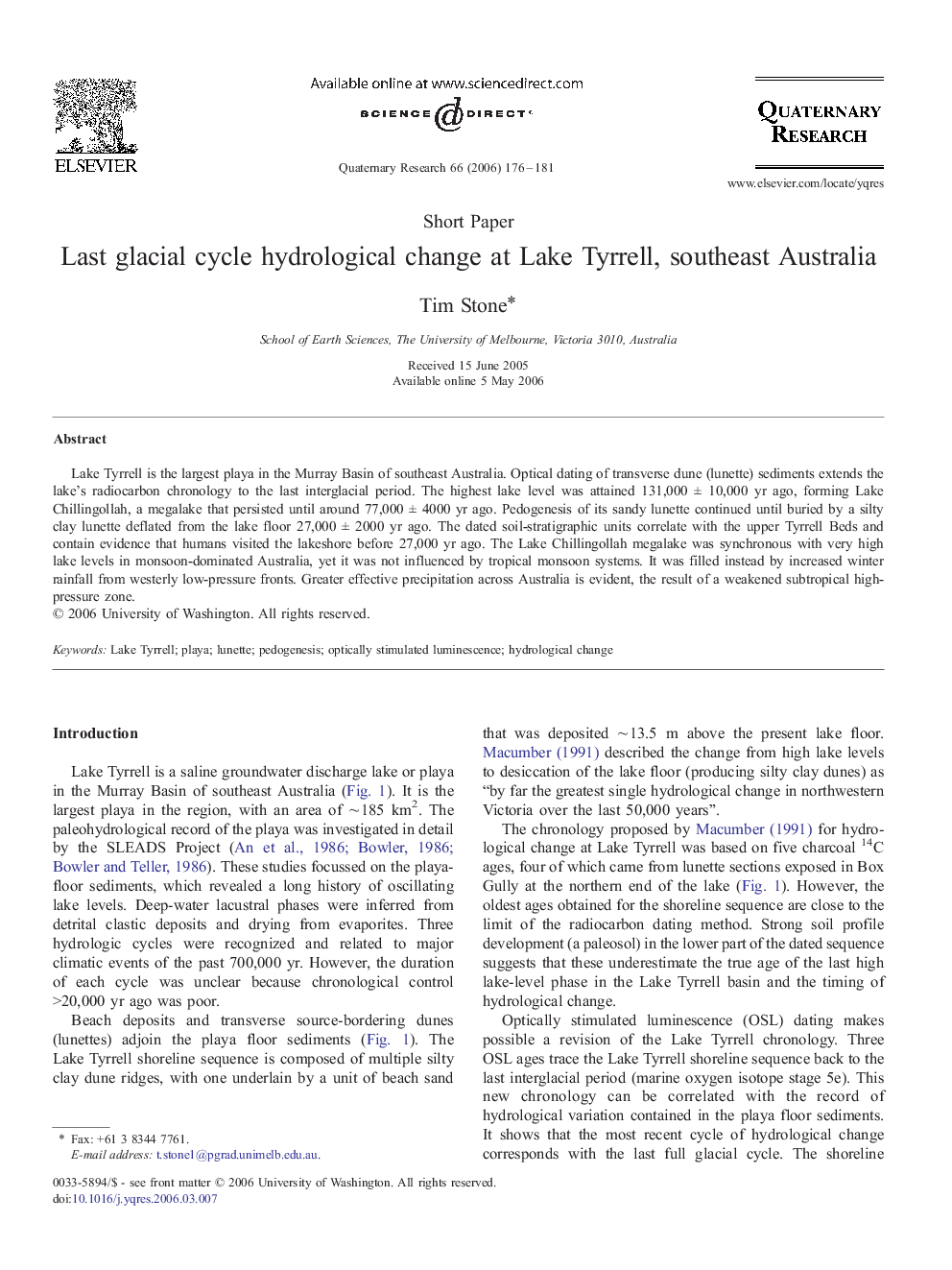| Article ID | Journal | Published Year | Pages | File Type |
|---|---|---|---|---|
| 1046126 | Quaternary Research | 2006 | 6 Pages |
Lake Tyrrell is the largest playa in the Murray Basin of southeast Australia. Optical dating of transverse dune (lunette) sediments extends the lake's radiocarbon chronology to the last interglacial period. The highest lake level was attained 131,000 ± 10,000 yr ago, forming Lake Chillingollah, a megalake that persisted until around 77,000 ± 4000 yr ago. Pedogenesis of its sandy lunette continued until buried by a silty clay lunette deflated from the lake floor 27,000 ± 2000 yr ago. The dated soil-stratigraphic units correlate with the upper Tyrrell Beds and contain evidence that humans visited the lakeshore before 27,000 yr ago. The Lake Chillingollah megalake was synchronous with very high lake levels in monsoon-dominated Australia, yet it was not influenced by tropical monsoon systems. It was filled instead by increased winter rainfall from westerly low-pressure fronts. Greater effective precipitation across Australia is evident, the result of a weakened subtropical high-pressure zone.
